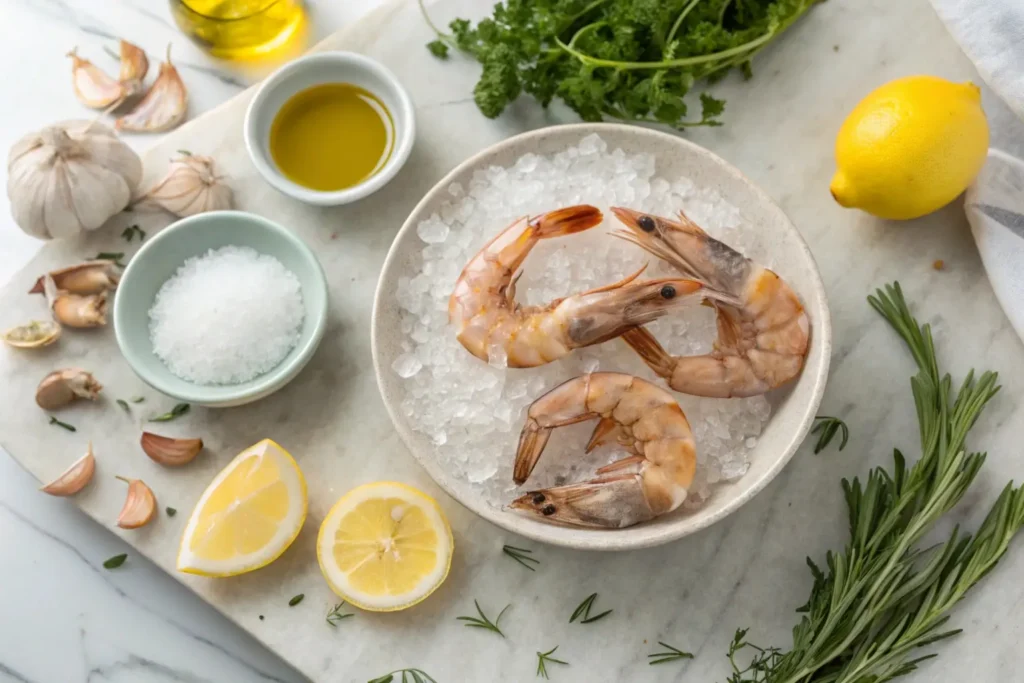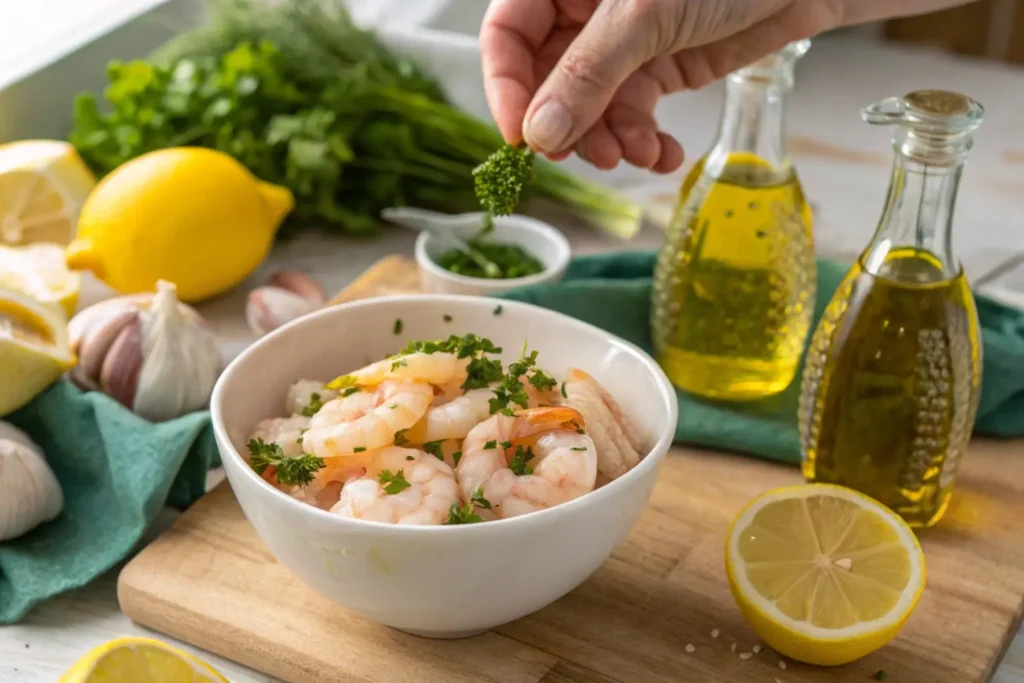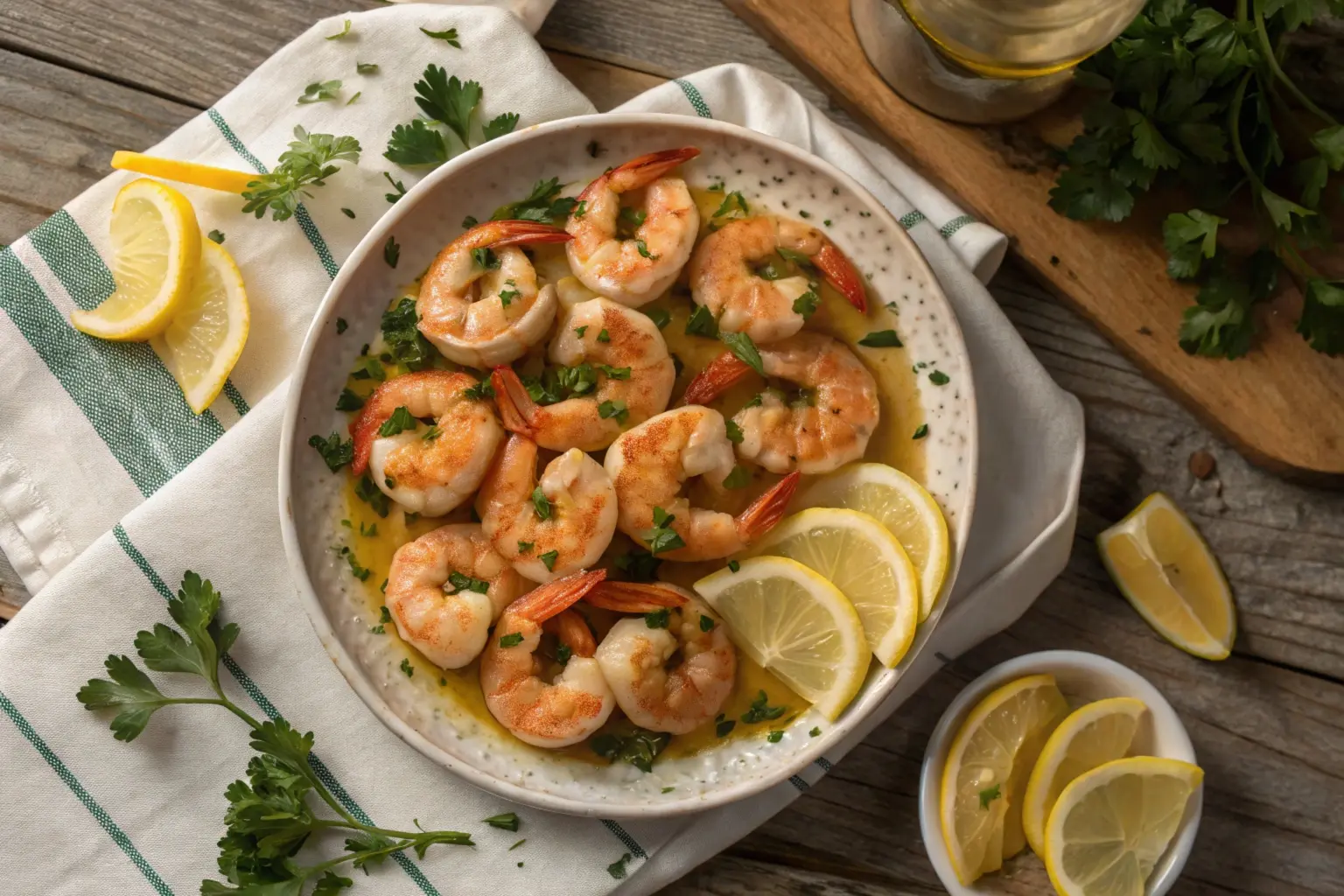Cooking shrimp to perfection is both an art and a science. Achieving tender, juicy shrimp can elevate your dish from good to unforgettable. However, overcooking shrimp can turn it rubbery and unappetizing, while undercooking may leave it unsafe to eat. This article unravels how to make shrimp very tender using proven techniques, the right ingredients, and thoughtful cooking methods. From selecting the perfect shrimp to mastering different preparation techniques, we’ll cover everything you need to know to create succulent, flavorful shrimp every time.
Introduction to Tender Shrimp
Why Learning How to Make Shrimp Very Tender Matters
Tender shrimp isn’t just about taste—it’s about texture, too. The delicate sweetness of shrimp is best complemented by a soft, buttery bite. Whether you’re grilling, steaming, or sautéing, tenderness transforms shrimp into a crowd-pleasing star ingredient. Achieving this perfect texture is crucial for dishes like garlic butter shrimp, shrimp scampi, or ceviche, where the shrimp takes center stage.
Common Mistakes That Lead to Tough Shrimp
Unfortunately, shrimp is one of those proteins that can go from perfectly tender to overly chewy in the blink of an eye. Overcooking is the most common culprit, often caused by high heat or cooking shrimp too long. On the flip side, skipping proper preparation steps, like marination or temperature control, can leave your shrimp dry and bland.
By learning how to make shrimp very tender, you’ll unlock the secrets to creating dishes that are not only visually stunning but also melt-in-your-mouth delicious. The key lies in understanding the science of cooking shrimp, selecting the right techniques, and pairing them with flavors that enhance their natural sweetness.
Choosing the Right Shrimp
How Shrimp Quality Impacts Tenderness
The journey to achieving tender shrimp starts with selecting the right kind of shrimp. Both fresh and frozen options can work well, but there are a few things to keep in mind. Fresh shrimp is often prized for its flavor, but its quality can quickly decline if not handled properly. On the other hand, frozen shrimp, when thawed correctly, retains much of its original texture and taste.
When buying frozen shrimp, look for ones labeled as “IQF” (individually quick frozen). This ensures each shrimp was frozen at its peak freshness. Also, avoid shrimp with excessive ice crystals, which can indicate poor storage. If you’re wondering how to make shrimp very tender, starting with high-quality frozen shrimp can be just as effective as fresh.
Fresh vs. Frozen: Which Shrimp is Better for Tender Results?

Keeping the shell on during cooking acts as a protective layer, sealing in moisture and flavor. Shell-on shrimp are less likely to dry out, making them ideal for methods like grilling or broiling. The shell traps juices and prevents overexposure to heat, which is a key factor in maintaining tenderness.
For dishes requiring peeled shrimp, cook with the shell on first and peel it later. This small step can make a big difference in your quest for tender, juicy shrimp.
Does Shrimp Size Matter for Tenderness?
Shrimp size matters more than you might think. Larger shrimp retain moisture better and are less prone to overcooking compared to smaller varieties. When a recipe calls for quick-cooking methods like sautéing or frying, choosing medium to large shrimp ensures they remain tender.
By starting with the right shrimp, you’re already halfway to mastering how to make shrimp very tender.
Techniques for Tender Shrimp
Marinating Shrimp: A Key to Tenderness

Marination is a game-changer when it comes to keeping shrimp tender. A simple mix of olive oil, lemon juice, garlic, and herbs can work wonders in locking in moisture. Acidic ingredients like vinegar or citrus break down proteins slightly, enhancing both flavor and texture. For the best results, marinate shrimp for 15–30 minutes before cooking—any longer can make them mushy.
Quick Cooling: How Blanching Keeps Shrimp Juicy
Blanching shrimp is another effective technique for tenderness. Simply drop the shrimp into boiling water for 1–2 minutes, then quickly transfer them to an ice bath. This method stops the cooking process immediately, preventing overcooking while preserving their natural juiciness.
Using Acids Like Lemon to Soften Shrimp Naturally
Acids not only enhance flavor but also help tenderize shrimp. Adding a splash of lemon juice or a light drizzle of vinegar during cooking can make a noticeable difference. These ingredients work by breaking down tough muscle fibers, resulting in softer, melt-in-your-mouth shrimp.
Mastering Cooking Temperature for Perfectly Tender Shrimp
Temperature is everything when learning how to make shrimp very tender. Over high heat, shrimp cook too fast and risk becoming rubbery. Instead, opt for medium heat and cook just until the shrimp turn pink and opaque. Using a food thermometer to ensure the internal temperature reaches 120°F can be a foolproof way to achieve perfect tenderness.
The Role of Resting Time in Tenderness
Just like steak, shrimp benefit from a brief resting period after cooking. Allowing them to rest for a few minutes lets the juices redistribute, making each bite tender and flavorful.
Cooking Methods to Ensure Tenderness
Steaming Shrimp: A Gentle Approach
Steaming shrimp is one of the gentlest ways to cook them, making it ideal for retaining tenderness. Place the shrimp in a steamer basket over boiling water with aromatic additions like lemon slices or garlic cloves. The steam cooks the shrimp evenly and prevents overexposure to high heat. This method is especially effective if you’re learning how to make shrimp very tender with minimal effort. Steamed shrimp can be served as-is or tossed into a light salad for a refreshing meal.
Simmering in Garlic Butter: A Flavorful Tenderizing Method
Simmering shrimp in a garlic butter sauce not only enhances flavor but also locks in moisture. To do this, melt butter in a pan, add garlic, and let it simmer until fragrant. Then, add the shrimp and cook on low heat until they turn pink and opaque. This method works wonders because the sauce forms a barrier that keeps the shrimp juicy and tender. For an extra burst of flavor, try adding a splash of white wine or lemon juice to the sauce.
Why Roasting Helps Maintain Shrimp’s Tenderness
Roasting is a less conventional but highly effective method for cooking shrimp. Preheat the oven to 400°F and spread the shrimp on a baking sheet, seasoned with olive oil, garlic, and herbs. Roast for 8–10 minutes, flipping them halfway through. This method ensures even cooking and avoids the risk of rubbery textures, especially when you’re focused on how to make shrimp very tender. Roasting also brings out a subtle sweetness in the shrimp that’s perfect for pasta or rice dishes.
Braising for Maximum Flavor and Tenderness
Braising is ideal for creating deeply flavored shrimp dishes. Start by sautéing onions, garlic, and bell peppers, then add a flavorful liquid like broth or coconut milk. Add the shrimp and let them simmer gently. This method allows the shrimp to soak up the flavors while staying tender, making it a top choice for bold dishes like shrimp curry or gumbo.
Avoiding Overcooking When Grilling or Searing
Grilling or searing shrimp can quickly lead to overcooking if not done carefully. Always preheat the grill or pan, and cook shrimp for just 2–3 minutes per side. Using shell-on shrimp adds a layer of protection against direct heat, preserving their juicy texture. When done right, these methods yield smoky, caramelized shrimp that remain tender.
Enhancing Flavor Without Compromising Tenderness
Best Ingredients for Soft, Juicy Shrimp
Shrimp’s mild flavor makes it a versatile ingredient that pairs well with a variety of complementary flavors. To enhance its natural sweetness without compromising tenderness, consider pairing it with garlic, lemon, fresh herbs, or even mild spices like paprika or cayenne. These ingredients not only add depth but also accentuate the shrimp’s soft, juicy texture.
The Role of Herbs and Spices in Tender Shrimp Recipes
The right combination of herbs and spices can elevate your shrimp dish while keeping it tender. Fresh parsley, cilantro, and thyme work beautifully with shrimp, while a dash of garlic and red pepper flakes can provide an aromatic kick. When cooking shrimp in sauces or marinades, ensure the seasoning is balanced so that the shrimp remains the star of the dish.
Frequently Asked Questions
How Do I Prevent Shrimp from Becoming Rubbery?
Preventing shrimp from becoming rubbery starts with understanding the cooking process. Shrimp cook incredibly quickly, so timing is everything. Whether you’re grilling, steaming, or roasting, keep an eye on them and remove them from the heat as soon as they turn pink and opaque. Overcooking is the primary culprit behind tough shrimp, so using a timer or a thermometer can make all the difference. This tip is a game-changer for anyone asking, how to make shrimp very tender?
What is the Best Way to Test Shrimp for Doneness?
To test shrimp for doneness, look for visual and textural cues. Properly cooked shrimp will curl into a “C” shape, feel firm but not hard, and have an opaque pink color. If they’re curled tightly into an “O,” they’re likely overcooked. Additionally, a quick taste test can confirm their tenderness, especially when trying new cooking methods.
Can Tender Shrimp Be Achieved Without Shells?
Yes, you can achieve tender shrimp without shells, but it requires extra care. Using marinades, gentle cooking techniques like steaming or braising, and avoiding high heat are essential. However, leaving the shells on during cooking provides a natural barrier, keeping the shrimp moist and flavorful.
How Long Should Shrimp Be Marinated?
The ideal marination time for shrimp is 15–30 minutes. This allows the shrimp to absorb flavors without breaking down excessively. Over-marinating, especially with acidic ingredients, can make the shrimp mushy instead of tender.
Conclusion
Recap of Key Tips for Tender Shrimp
Making shrimp tender isn’t as tricky as it seems once you know the key steps. From selecting high-quality shrimp to using proper cooking techniques like steaming or braising, each method helps retain moisture and flavor. Timing and temperature control are critical to avoid overcooking, and adding complementary ingredients like garlic, lemon, or fresh herbs can elevate the dish even further. Now that you know how to make shrimp very tender, you can confidently create restaurant-quality seafood dishes at home.
Encouragement to Try These Techniques
With these tips, there’s no reason to settle for tough or rubbery shrimp ever again. Whether you’re preparing a quick stir-fry, a hearty curry, or a light salad, these methods will help you nail the perfect texture every time. So grab your favorite shrimp recipe, test out these techniques, and let your taste buds celebrate the results!

